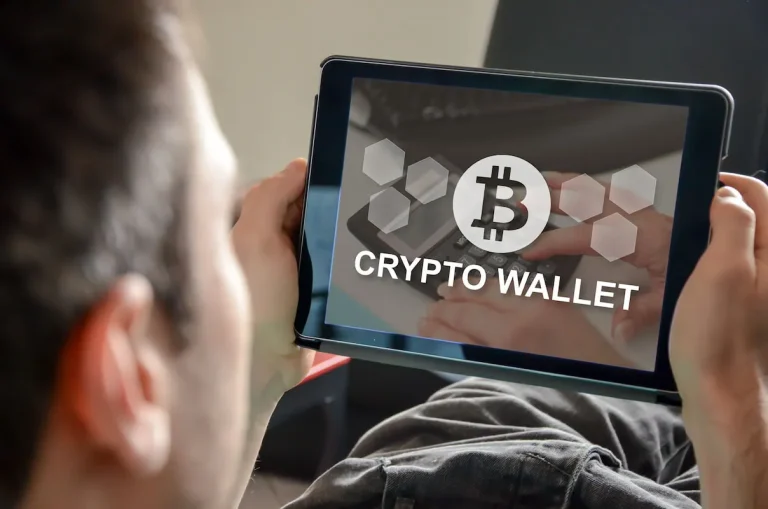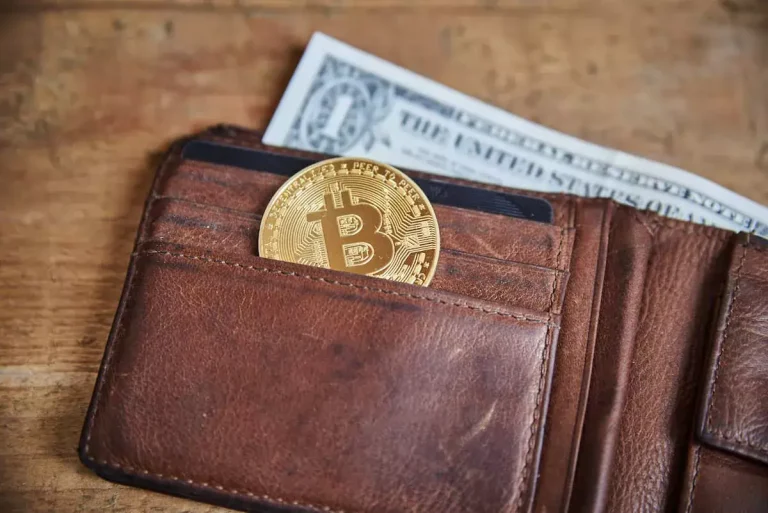Nowadays, protecting your digital assets is essential in the fast-paced digital world. Safeguarding these assets is more important than ever in an era where virtual currencies rule the world of trade and investing. Making an excellent crypto wallet is a difficult adventure, calling for accuracy, knowledge, and unbreakable dedication. Each stage of the complex process can affect the safety of invested funds. It’s not just lines of code; it’s about strengthening the digital fortresses holding financial dreams and investments. To help you learn the process of crafting a crypto wallet, in the article, we will analyze each element of creating such a product.
Crypto Wallets Market Overview
First, let’s dwell on what is a cryptocurrency wallet. It is a particular program allowing customers to pay, transfer, and store money. Today, almost 300 million customers have tried virtual tokens. 7.5 billion people on earth are likely to start using digital currencies soon, especially as BTC and other currencies are reaching record highs.
The introduction of a multi currency wallet will become necessary in light of several reliable data that demonstrate the growing widespread acceptance of virtual tokens:
- Twitter postings about digital tokens average over 30 per minute.
- In August 2023, the OMV of digital coins hit $1.13 trillion.
- More than 22,932 distinct tokens are applied.
Moreover, $111 billion is the statistical daily amount of crypto trades.


Turnkey Brokerage Solution For Your Business
Get the most profitable fully licensed fx/crypto brokerage software or ready-to-operate business in 48 hours. Best-in-class web & mobile trading platforms, sales-driven CRM, full integration with MT4/5, and 150+ payment providers.
Benefits of Integrating Cryptocurrency Wallet for Business
Along with introducing a whole new lead market, accepting cryptocurrency payments speeds up transactions, cuts costs, and improves security. You see many positives in embedding a digital wallet into the business:
- Since there are fewer middlemen, you can expect lower costs if you do a lot of transactions.
- In transactions, the developer applies trustworthy blockchain technology.
- Crypto vaults are more resistant to fraud, tampering, and cyberattacks.
Cryptocurrency wallet development seems an excellent way to stay competitive and satisfy consumers.

Why Is There a Need for Cryptocurrency Wallet Development?
The crypto market has expanded significantly over the past few years. The capital position reached its peak in 2021, sending market participants into awe. As more companies and individuals get involved in the digital token market, more people around the world will have access to this type of money. Therefore, there is a growing need for reliable and secure token storage methods. ZionMarketResearch predicts the cryptocurrency wallet market will skyrocket to a staggering $686 million over the next six years.
With an innovative blockchain wallet, you’ll discover a hassle-free future of digital transactions, where the problems of complex deals and non-permanent storage of tokens on exchanges fade into oblivion. Every user enjoys fast and easy transfers, sending tokens with unprecedented ease from one address to another with an advanced wallet.
In addition to providing privacy and security in cryptocurrencies, this advanced piece of software also opens up a wide range of revenue opportunities. The main factor is the huge potential to get financial gain. It is a vital tool linking the clientele and the financial environment. You will discover the full potential of virtual tokens by immersing yourself in them and applying cutting-edge innovations to improve the banking experience in cryptocurrency wallet development.
How to Create A Cryptocurrency Wallet?
Before comprehending the functions of distinctive wallet options, you need to understand the creation process. Here, we will touch on the stages of crypto wallet development in more detail.
Define your goals and features
First, it’s crucial to identify the specific coins your wallet will support, such as BTC or ETH, creating the foundation of your app. Then, make a comprehensive list of essential features, including but not limited to transaction history, QR code scanning capabilities, and robust security options such as two-factor authentication. By carefully describing these elements, you lay the ground for a user-friendly and secure crypto wallet meeting the needs and expectations of your users.
Find a reliable development company
Finding a responsible cryptocurrency wallet development company is the most essential factor in flourishing prosperity. When picking experts, keep several specialists in mind. First, product managers can see weaknesses in the concept and make suggestions to implement changes. Their management skills will integrate technical details with commercial objectives. Project managers will then oversee the work of UX/UI designers, blockchain developers, and back-end and front-end programmers to ensure the translation of the idea into a real product. Testers and QA specialists are critical to proving the safety and reliability of the application. DevOps engineers will guarantee the smooth operation of future updates.
Make a prototype
Making an interactive prototype is an essential step in crafting a wallet. Allocating a budget to a test model before building an MVP has several advantages. On the one hand, it saves money because competent engineers in the field of programming are few and expensive. At the same time, it helps achieve the perfect harmony between utility and features, a must for a successful startup. An interactive model, a virtual application representation, lets customers interact with it and identify areas that need crypto wallet development.
Development and testing
It’s time to make a Bitcoin wallet after thoroughly testing the prototype. It involves defining the technical architecture and outlining development milestones. The project focuses on two key elements: the development platform and the transaction engine. Choosing blockchain platforms like Quorum, Hyperledger, or BigChainDB is crucial in seamless creation. Quality assurance tests, including user experience, functionality, and performance, are essential to ensure the wallet’s reliability and robustness.
Pick cloud technologies and define the tech stack
Use AWS, Google Cloud, or Azure cloud technologies to build a scalable crypto web application that guarantees a great user experience. Cloud solutions in crypto-wallets allow flexible allocation of computing resources, ensuring uninterrupted performance even during peak usage. In addition, choosing the right technology stack and blockchain expertise for your project’s needs is vital. Languages like JavaScript are ideal in web wallets, while Java/Kotlin suits mobile applications.
Publishing and maintaining
Public release and uninterrupted application maintenance are extremely important at a critical stage of crypto wallet development. Now that the blockchain applied to make the wallet is no longer connected, the app is ready to join the main net. Maintenance becomes a complex task depending on the number of currencies requiring network connectivity.

Considering Different Types of Crypto Wallets
Devising multiple crypto products might be challenging but doable with the appropriate info and toolset. In this part, you will find a rough outline of the characteristics of various kinds of cryptocurrency wallets:
Web
These products are available online, and users access them via a browser. They keep small amounts of cash and handle daily deals. In cryptocurrency wallet development, you may apply frameworks that facilitate the creation of an interface and computer languages to create an online wallet.
Mobile
They meet the demands of consumers who want to transact on the go with an easy-to-navigate layout. Creating a mobile alternative requires programming skills in Swift or Java adapted for Android or Kotlin for iOS.
Hardware
These are physical objects that store crypto keys offline. Experts consider them to be the most secure option because they do not store their keys online, which makes hacking less likely. To produce a hardware cryptocurrency wallet, the programmer must know hardware architecture and microcontroller programming.
Paper
Paper wallet is a document keeping crypto as a tangible paper with the keys, typically a piece of paper. To forge general and personal keys, use a trusted key generator. You need these keys to obtain the tokens. Printing them into QR codes is all-important for scanning convenience.
Key Features to Include in Crypto Wallet
First and foremost, the wallet is a bulwark of asset protection, protecting tokens amid the ever-changing currents of cryptocurrency exchanges and markets while protecting against the perils of trading. The main tasks of the program to achieve this important goal are:
- Each user must have a unique key, a personal crypto pair that protects their online identity. Furthermore, the ability to further strengthen this security by implementing 2FA or adding a personalized password is a key element in giving consumers control and confidence in their digital transactions.
- Work with multiple cryptocurrencies. While there are single-currency options like LTC or Bitcoin wallets, their popularity is falling in line with multi cryptocurrency wallet development. Keeping everything in one place and managing a broad portfolio of assets is often more convenient.
- Supporting different tokens. It is imperative to study the tokenization processes when creating an application carefully. Consider supporting multiple blockchain token specifications.
- The QR code simplifies transactions, sending assets, logging in securely, and performing other tasks. A quick scan opens up many options and securely connects users to their chosen locations in the wallet app.
- Push notifications report asset movements, errors, and keycodes while maintaining transaction integrity. Besides convenience, these notifications are vital safeguards for your safety.
Careful consideration of these factors is essential when designing a crypto wallet that effortlessly combines usability with various features. It can be difficult to navigate the complex web of multiple features, especially when ensuring a seamless onboarding process to new customers. Finding the fine line between sophistication and simplicity that presents an unparalleled user experience requires careful thought and creative concepts.
How Much Does It Cost to Develop a Crypto Wallet?
A variety of factors affect the cost of crypto wallet app. Let’s think about the most significant ones:
- It depends on how complex you want your product to be. It will cost more if you need special features or a high level of security.
- The price depends on the qualifications and experience of the programmers. Experienced developers usually charge more.
- The type of digital coins you want a wallet for is all-important. Some coins have special requirements, and crafting a wallet for them can be more complicated and, therefore, more expensive.
- Functionality in the hands of talented designers. Their expertise goes beyond aesthetics; they design user interfaces that charm people with their user-friendliness and perfectly meet their individual needs. It can usually cost a fortune.
- As the primary custodians of user profiles, most platforms include basic security measures such as PINs, Touch ID, and passwords. But as security evolves, problems arise that lengthen the time and price of crafting a cryptocurrency wallet. Attributes like 2FA increase protection, ensuring access and ultimate security.
It costs between $120,000 and $200,000 to start making a wallet endowed with real value and revolutionary potential. Nevertheless, the wise advice is to kick off by growing the concepts and quickly turning them into prototypes, typically costing around $20,000.
Build a Crypto Wallet App with XCritical
With the cutting-edge, business-backed wallet, you may simply manage, swap, purchase, and store digital assets all in one app. Every digital currency interaction requires a wallet, a digital haven for storing, exchanging, and trading myriad cryptocurrencies. If you plan to craft a top-notch product, contact XCritical — a company that knows how to create a crypto wallet. The team stands as a distinguished development firm with extensive expertise in crypto wallet app creation. To give consumers a robust and safe solution to handle their crypto assets while upholding a top quality level and usability, XCritical offers to construct a wallet tailored to their specific needs.






